Understanding the Cebu/Negros earthquakes
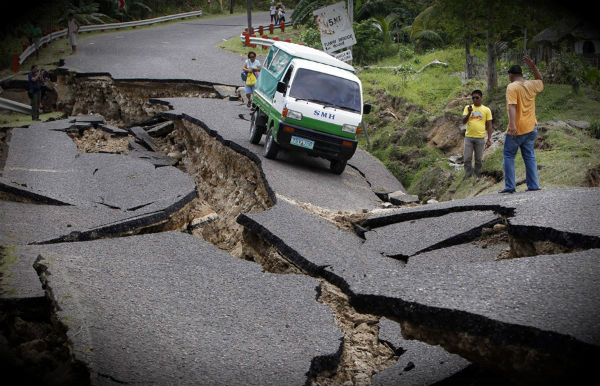
A swarm of earthquakes hit Philippines last two days. An earthquake of magnitude 6.7 yesterday was the strongest and it occurred in the very highly populated region of Central Visayas in Philippines. Philvolcs, the Philippines seismological bureau has reported a magnitude of 6.9 at the shallow (damaging) depth of only 10 km. More than 700 aftershocks were recorded in Visayas so far. There were reports about dozens of collapsed bridges and cracked roads, rockfall, landslides and road slip. The official death toll stands at 15. Military sources are claiming however that 43 people have lost their life. Most of the casualties were victims of the landslides. Many aftershocks are currently hitting the epicenter area.
Guihulngan City with population around 100,000 has been the hardest hit with a total loss of power and water supply. Guihulngan City is at least 30 km from the Phivolcs located epicenter. The majority of the homes have completely collapsed in Tibyawan, Ayungon, Negros Oriental. Many of the families their currently have no access to food or water because of the roads being damaged. PIA reports that Jimalalud, Guihulngan and La Libertad cannot be reached due to damage to bridge.
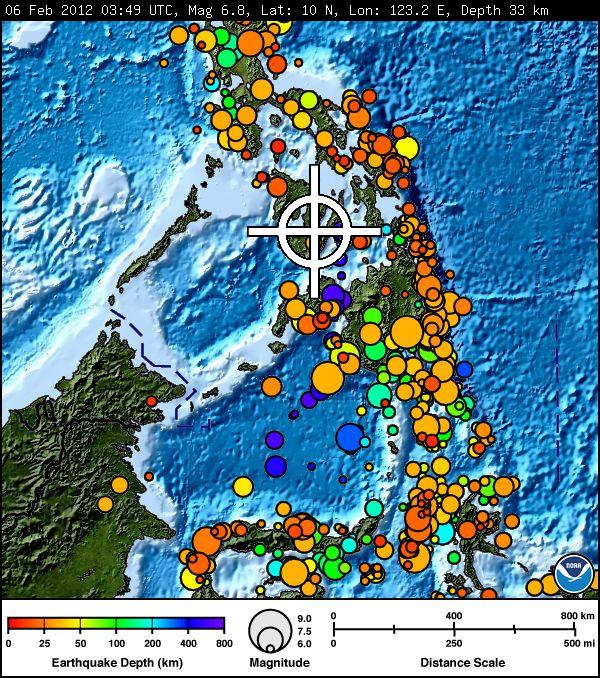
There were reports about retreating sea which is indication of possible tsunami waves. Rising sea water wiped few cottages along seashore. The tsunami alert was issued for the Cebu and Negros coastlines. Local tsunami alerts have been put out in the Visayas region – Alert Level 2 – stay away from the coast due to unusual waves. Bellow is the video showing rise of the sea water in La Libertad . For more damage reports and earthquake data please visit EarthquakeReport.

Tectonic summary
The broad-scale tectonics of the Philippine Islands are dominated by the west-northwest convergence of the Philippine Sea plate with respect to the Sunda plate. This motion, about 10 cm/year at the latitude of the earthquake of February 6, 2012, is accommodated by subduction along the east and west sides of the Philippines Archipelago and by motion of microplates and distributed deformation within the Archipelago. The February 6 earthquake occurred as thrust-faulting within the archipelago. Several earthquakes similar in size to the February 6 earthquake occurred within the archipelago in eastern Negros, Cebu, and Bohoi in the twentieth century. In 1948 a magnitude 8.1 earthquake occurred about 150 km to the west of the February 6 earthquake in a zone of shallow seismicity that is associated with subduction along the Negros Trench on west side of the Philippines Archipelago. (Earthquake summary/USGS)
The Philippine Sea Plate is comprising oceanic lithosphere that lies beneath the Philippine Sea, to the east of the Philippines. Most segments of the Philippines, including northern Luzon, are part of the Philippine Mobile Belt, which is geologically and tectonically separate from the Philippine Sea Plate.
The Eurasian Plate is being subducted along the western side of Luzon and Mindoro at a rate of 3cm/year. The Philippine Fault Zone decouples the northwestward motion of the Pacific with the southwestward motion of the Eurasian Plate. Movements along other active faults are responsible for the present-day high seismicity of the Philippine Archipelago. For the last 35 years, the Philippines have been affected by 10 earthquakes with magnitude greater than 7.0.
Destructive Earthquakes in the Philippines
1968 August 02 Ms7.3 Casiguran Earthquake
1973 March 17 Ms7.0 Ragay Gulf Earthquake
1976 August 17 Ms7.9 Moro Gulf Earthquake
1983 August 17 Ms6.5 Laoag Earthquake
1990 February 08 Ms6.8 Bohol Earthquake
1990 June 14 Ms7.1 Panay Earthquake
1990 July 16 Ms7.9 Luzon Earthquake
1994 November 15 Ms7.1 Mindoro Earthquake
1996 May 27 Ms5.6 Bohol Earthquake
1999 June 07 Ms5.1 Bayugan Earthquake
2002 March 06 Ms6.8 Palimbang Earthquake
2003 February 15 Ms6.2 Masbate Earthquake
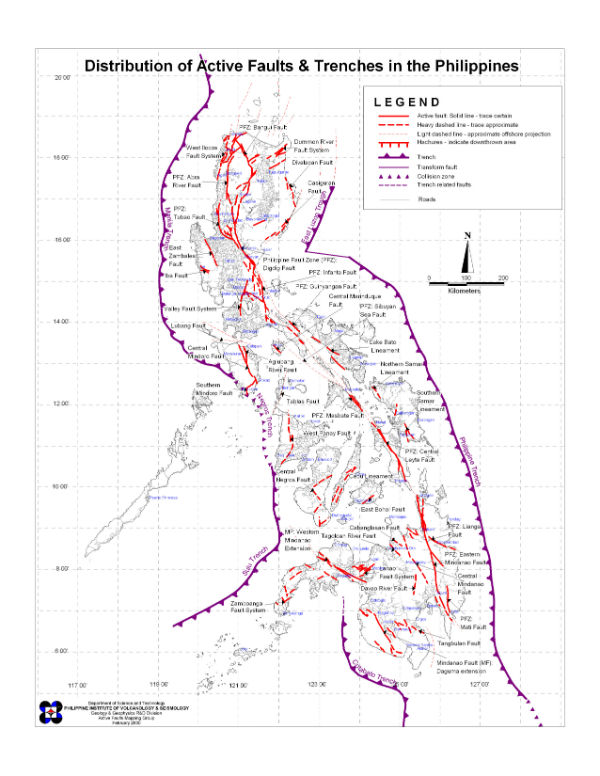

The 1,200-km-long Philippine fault zone (PFZ) is a major tectonic feature that transects the whole Philippine archipelago from northwestern Luzon to southeastern Mindanao. This arc-parallel, left-lateral strike slip fault is divided into several segments and has been the source of large-magnitude earthquakes in recent years, such as the 1973 Ragay Gulf earthquake (M 7.0), 1990 Luzon earthquake (M 7.7) and 2003 Masbate earthquake (M 6.2). These are direct consequences of rapid convergence between the Philippine Sea Plate and the Sundaland Plate (part of the Eurasian Plate) along dual, opposing subduction in the Manila Trench (western margin), and along the East Luzon Trough-Philippine Trench (eastern margin). In addition to these features, strike-slip faulting also occurs along the NW-SE-trending Philippine Fault System and the Verde-Passage/Sibuyan Sea Fault. Extensive faulting and deformation is also observed in southwestern Luzon, along the Marikina Fault System and the Macolod Corridor.


Philippines Institute of Volcanology and Seismology
PHIVOLC Earthquake Annual Reports
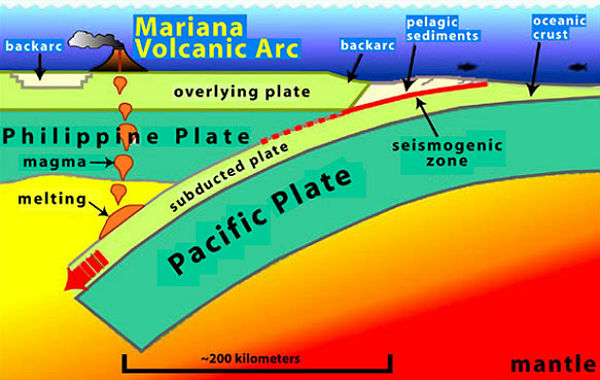

Volcanoes
The volcanoes of the Philippines are probably the most deadly in world. They are concentrated in a northern volcanic arc above and east of the north-western subduction zone (Manila Trench) and in a southern volcanic ar above and west of the south-eastern subduction zone (Philippine trench).The Sulu trench also produce a (discontinuous) line of active volcanoes. The Mayon volcano may be associated with the transform fault that connects the eastern and the western subduction zones. This transform fault is offset by the younger north-south directed Philippine Fault.
Featured image credit: Dennis M. Sabangan

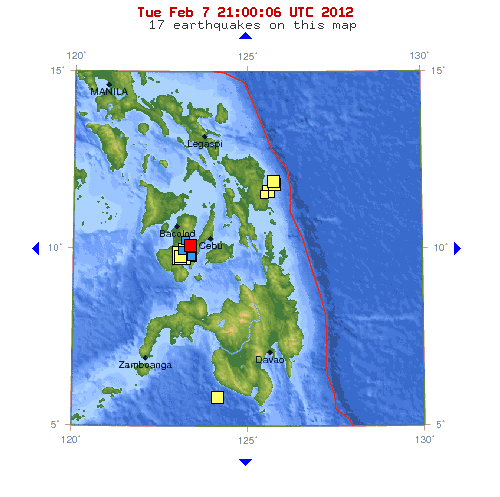
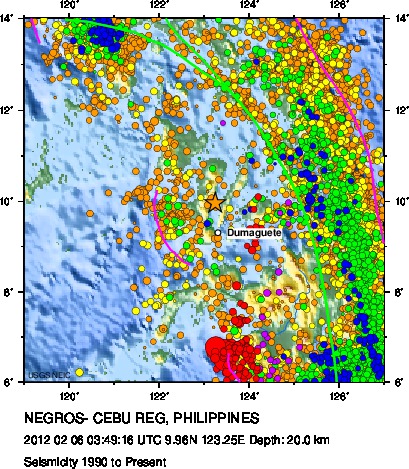
Commenting rules and guidelines
We value the thoughts and opinions of our readers and welcome healthy discussions on our website. In order to maintain a respectful and positive community, we ask that all commenters follow these rules:
We reserve the right to remove any comments that violate these rules. By commenting on our website, you agree to abide by these guidelines. Thank you for helping to create a positive and welcoming environment for all.